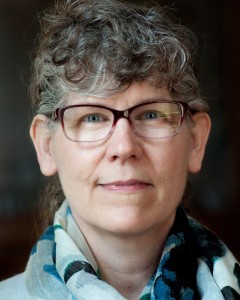Integration is key to sustaining early childhood gains
- likoau
- Oct 26, 2015
- 4 min read
Improving outcomes for the youngest children in our poorest schools is probably the single most important thing our community can do right now to give city students a chance at success.
I am often told by educators that the research is clear on this point: Children who do not move from “learning to read” to “reading to learn” by the third or fourth grade are very unlikely to ever catch up in school or acquire the skills they need to engage in lifelong learning.
Mark Hare is a member of the GS4A leadership team
Luckily for Rochester children, ROC the Future—which describes itself as a “community-wide alliance to align efforts and resources to improve academic achievement for Rochester’s children”—has been advocating and keeping track of progress on several fronts since 2011.
With release earlier this month of ROC the Future’s annual report card, the headline on the Democrat and Chronicle story read, “Kids report shows progress, problems.”
First the good news.
The report (find it here) notes that ROC the Future’s most significant accomplishments to date include “developmental screenings and quality preschool education for 3-year-olds, along with improving K-3 attendance” and a continued “focus on achieving grade-level reading by 3rd grade.”
In addition:
In Rochester in 2013 “72 percent of births were to women who received early prenatal care, up from 63 percent in 2000, though still below the region-wide figure of 78 percent.”
“The preschool years are critical to healthy child development. Enrollment in a quality pre-kindergarten program can make a big difference in children’s readiness for school. In 2014, 67 percent of Rochester’s 4-year-olds were enrolled in publicly funded pre-K, the highest level in the region and up from 31 percent in 2001. If we add in 4-year olds attending the federally funded Head Start program, the participation rate exceeds 95 percent…By the end of their pre-K year, 64 percent of pre-K students were considered ready for school in 2015.”
“Rochester has put a bright focus on school attendance in recent years, and its efforts are paying off , though chronic absence still remains too high. In 2014-15, 30 percent of students in kindergarten through 3rd grade missed 10 percent or more of the school year (18+ days) and so were considered chronically absent. This was a decline from 37 percent the previous year.”
Now, the not-so-good news.
“Missing school, along with other factors, puts students at high risk of academic failure. The story told by state test results remains disappointing, with 7 percent of Rochester’s 3rd graders meeting state standards on the reading exam, 9 percent of 4th graders passing math, 4 percent of 8th graders passing English and less than 1 percent of 8th graders passing math.”
And then there’s the really bad news.
While about half of city high school students graduate on time, “many are not ready for college academics.” ROC the Future reports that of RCSD graduates who enrolled at Monroe Community College, 27 percent were considered college-ready in math, 45 percent in English, and just 18 percent were proficients in both subjects.”
This the same pattern we’ve seen for 40 years: Modest to encouraging gains at the early levels seem to fade as students enter middle school, and then disappear altogether for too any high school students.
This is precisely why integration across racial and socio-economic lines is so important. As children become more susceptible to peer pressure and simultaneously more independent of parents, children who are surrounded in school by others who expect to fail are far more likely to expect failure themselves—and far less likely to make education a priority. Put those same children in a school where many of their peers have higher expectations—and the adults in the room share those expectations—and those same students do much better.
Richard Kahlenberg is a senior fellow at the Century Foundation in Washington D.C., and he has written extensively on the racial and socio-economic integration for decades. In a 2014 interview with the PBS documentary series, Frontline, Kahlenberg explained that there two fundamental purposes for public education:
“…to promote social mobility so that a child, no matter her circumstances, can, through a good education, go where her God-given talents would take her. The second purpose is to strengthen our democracy by creating intelligent and open-minded citizens, and related to that, to build social cohesion.”
Central to the attainment of both purposes is the interaction among students in the classroom. Kahlenberg says not only are “separate but equal” schools unconstitutional, they are non existent. A public school education, he says, must give every student access to the same resources, the same opportunities in the same environment.
Public education is supposed to be the great equalizer. Integration, it turns out, is not just an amenity. It is central to equality of opportunity and to the success of the very students most likely to drift toward failure after middle school. Integration, it turns out, is the surest way to add staying power to the improvements we’re seeing with early childhood initiatives in Rochester.







Comments